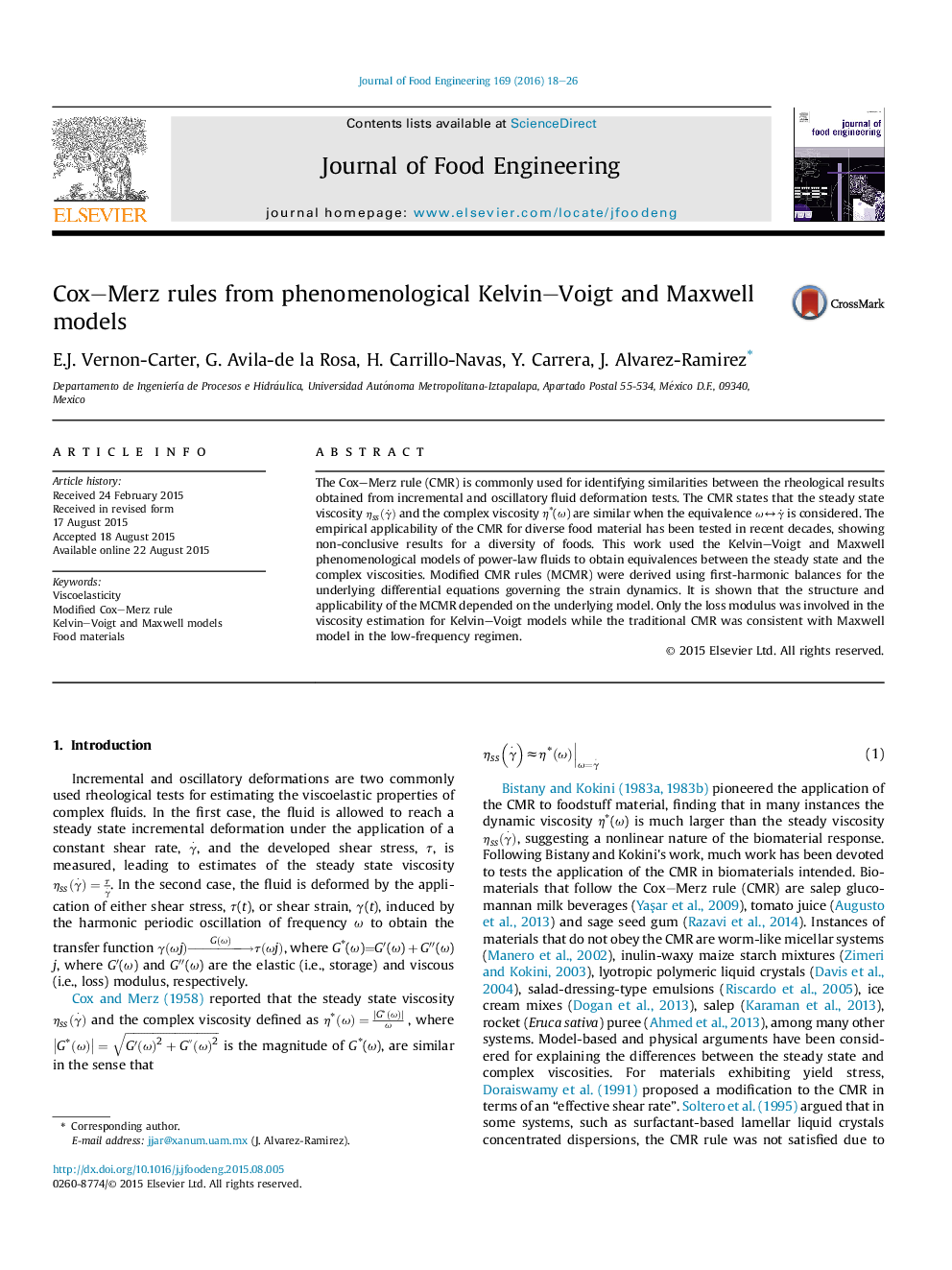| Article ID | Journal | Published Year | Pages | File Type |
|---|---|---|---|---|
| 6664934 | Journal of Food Engineering | 2016 | 9 Pages |
Abstract
The Cox-Merz rule (CMR) is commonly used for identifying similarities between the rheological results obtained from incremental and oscillatory fluid deformation tests. The CMR states that the steady state viscosity ηss(γË) and the complex viscosity ηâ(Ï) are similar when the equivalence ÏâÎ³Ë is considered. The empirical applicability of the CMR for diverse food material has been tested in recent decades, showing non-conclusive results for a diversity of foods. This work used the Kelvin-Voigt and Maxwell phenomenological models of power-law fluids to obtain equivalences between the steady state and the complex viscosities. Modified CMR rules (MCMR) were derived using first-harmonic balances for the underlying differential equations governing the strain dynamics. It is shown that the structure and applicability of the MCMR depended on the underlying model. Only the loss modulus was involved in the viscosity estimation for Kelvin-Voigt models while the traditional CMR was consistent with Maxwell model in the low-frequency regimen.
Keywords
Related Topics
Physical Sciences and Engineering
Chemical Engineering
Chemical Engineering (General)
Authors
E.J. Vernon-Carter, G. Avila-de la Rosa, H. Carrillo-Navas, Y. Carrera, J. Alvarez-Ramirez,
